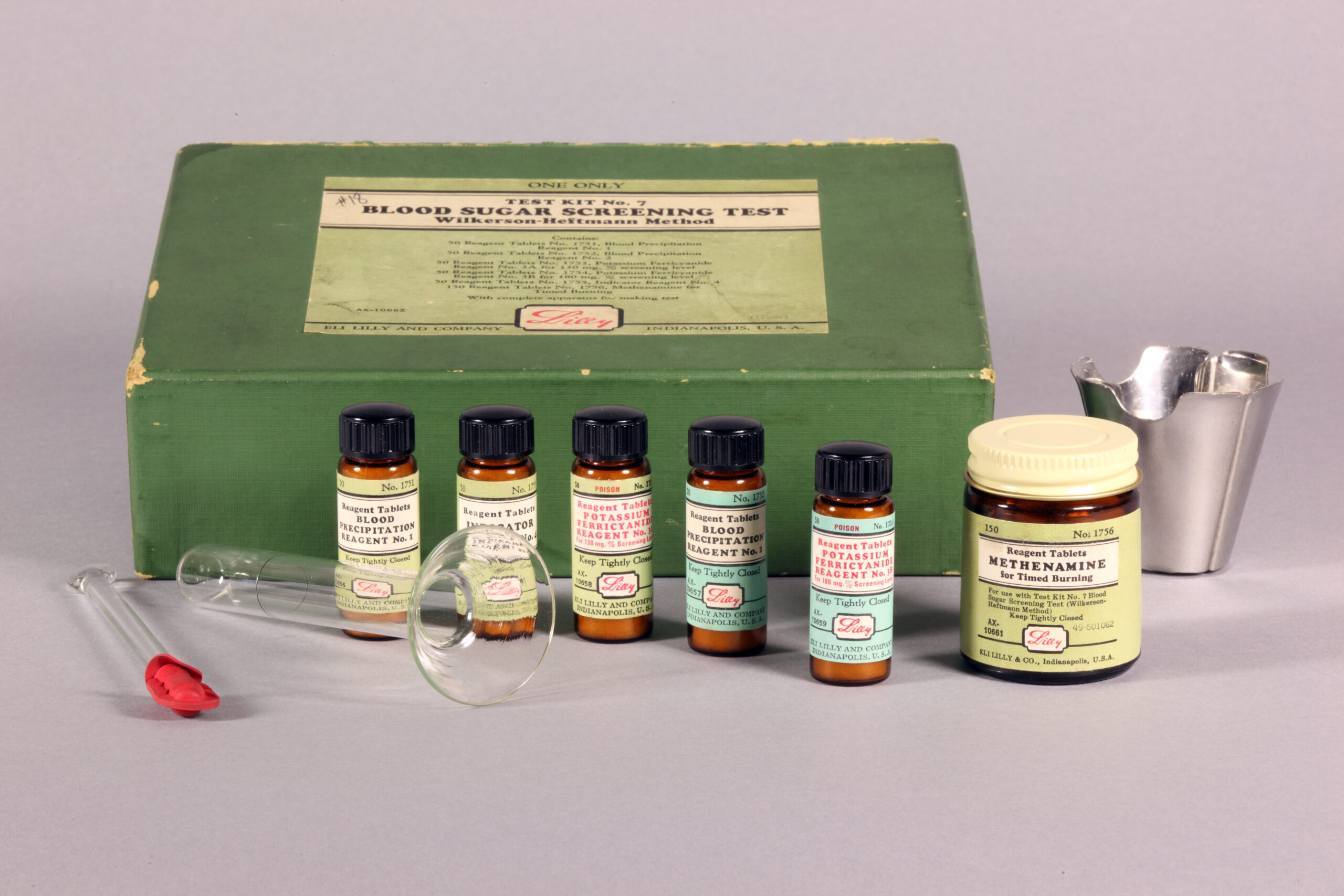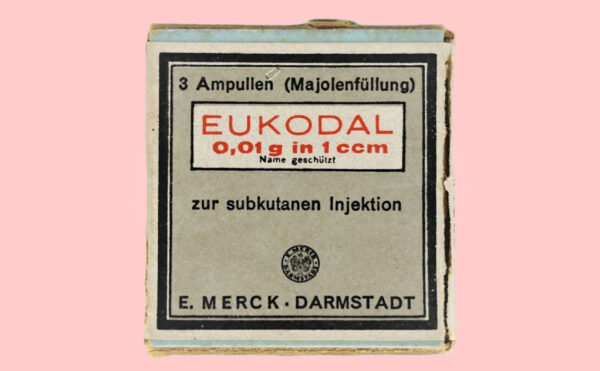In the early 20th century a few doctors wondered whether the preferred treatment for diabetes in children—starvation—might be worse than the actual disease, as both carried a high risk of death. Insulin, discovered in Toronto in 1921, proved a milestone in turning type-1 diabetes into a treatable condition. In the United States Michael Somogyi, along with two other biochemists, developed a method for extracting insulin from the pancreases of animals. In 1922 doctors treated the first diabetic American child with Somogyi’s insulin.
At that time, to confirm suspected diabetes, doctors would screen for sugar using copper solution and the patient’s boiled urine. While working at the Jewish Hospital of St. Louis, Somogyi invented a faster and cheaper screening method: a caramelization test using sodium carbonate, urine, and heat. The next diagnostic advance was a blood-screening test. In 1949 Eli Lilly introduced Test Kit No. 7, which provided doctors with results in five to ten minutes and employed the Wilkerson-Heftmann method of blood analysis, which indicated whether sugar levels were abnormally high or low. Somogyi owned one of these kits, which contained four reagent tablets (readily available from pharmacies), several test tubes, and an asbestos pad. All that was required was distilled water and 0.1 cc of blood. The kit was 10 times cheaper than other screening methods and required no training for testing or interpretation: the solution would be either blue or clear. Blue indicated sugar was present and the patient had diabetes, clear indicated no sugar and therefore no diabetes.
Articles in medical journals encouraged doctors to screen widely for diabetes; one 1948 article in the Journal of the American Medical Association encouraged doctors to “test your own urine today . . . test each member of your family this week,” and to give a “URINE TEST FOR EVERY-ONE EVERY YEAR.” Blood screening would follow any positive urine test. Insulin, by then easily available thanks in part to Somogyi’s earlier work, was the treatment of choice. Somogyi himself grew to doubt the wisdom of indiscriminate insulin use. By 1948 he believed that most adult diabetics could control their disease through diet alone. He made his position public a year later, in a speech delivered during an American Chemical Society conference. He outraged much of the medical community, which believed Somogyi—a mere biochemist—unqualified to speak to patient care.
The Eli Lilly Test Kit No. 7 was donated to the Science History Institute by Harvey Walker Jr., a friend of Somogyi’s and cofounder of the Somogyi Diabetes Foundation.




